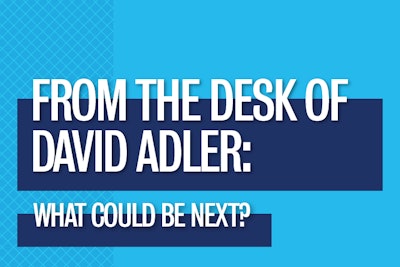
David Adler is the founder and chairman of BizBash
As we as event leaders begin to take stock of the effects of COVID-19 on our industry, one thing is clear: The world that we knew is over. It’s now time to reinvent and reimagine. Our industry has been devastated in the short term, but it could be a vital force in planning the future of an even better industry—with more purpose and respect for the power of live gatherings.
To compete in the world that emerges from this crisis, event organizers will need to be “collaboration artists.” Utilizing both digital and live tools to add real value will be necessary to infuse gatherings with compelling content, context, and community to achieve a planned higher-touch outcome. The time has come for collaboration tech and spatial computing to serve as the primary tools to create both intimacy and scale in a cohesive way.
Whether it’s as simple as getting the boys to dance with the girls at the school dance, or curating the ultimate gathering of professionals to collaborate on a problem, using smart facilitation is paramount. In the next few years, it won’t matter if organizers plan the best events; if fear is at the crux of attendee participation, the quality of the event and how safe it is will become the driving force for success.
I am proposing that we use a not-so-new organizational paradigm called the hub and spoke method. Pre-COVID-19, the holy grail for great events was to create intimacy in large groups. This method allows us to do that for real. Imagine an event for 5,000 people that uses 500 small venues throughout the nation, all connected and interacting as part of the entire spectacle. Maybe our political conventions should experiment this summer and help the event industry by using thousands of small gatherings that are connected to the hub center stage.
These venue networks can enable planners to create a way to offer scale and intimacy while keeping attendee numbers within safety guidelines—at least until some semblance of normalcy has returned to the world.
Here are the basic elements in a hub and spoke method network:
- Virtual bridges connect venues and individuals.
- A main hub venue will act as the primary stage with no more than 100 attendees; this will be home base to the presenters and leaders of an organization.
- Satellite locations will enable small groups of 10 to 50 in venues or hotel rooms.
- Home participants can also gather in smaller group spokes or individually to connect by the virtual digital bridge.
- Deploy smart facilitation techniques used by “collaboration artists” to bring individuals, spokes, and hubs together.
- Take advantage of spatial computing to digitize a room with virtual branding and presentation aids.
- Activate sponsors with spatial computing to duplicate branding to all spokes at once; for example, Magic Leap.
- Activate on-stage presentation synthesizers who interpret key takeaways and distribute to audience members.
- Deploy tools such as emotional recognition technology for speakers and organizers to read the room.
- Turn food and beverage into an experience by allowing for all hubs and spokes to offer augmented reality enhanced food boxes that can create shared experiences with disparate groups.
- Turn the hallway into an exhibit hall using spatial computing technology that can allow passersby to interact.
- Turn registration into a safety tool with the ability to collect temperature information if needed.
Some hard truths that may justify this approach:
- The complete hospitality layer will have less volume for individual events and adjust their value proposition immediately.
- Online meetings could lose their appeal as the fascination fades and people strive for better digital interaction. It could be death by Zoom instead of a bad PowerPoint.
- Many smaller companies, suppliers, and venues are facing a cash flow tsunami that is gathering steam quickly or will be gobbled up by better-financed companies.
- New talent will breakthrough with little friction.
- Spatial technology is almost ready for prime time. This is the ability to program a room with content and graphics.
- Companies will lay off internal staff and depend more on outsourcing.
- Fear will determine attendee participation.
I have had the honor of interacting with many people in our industry and am convinced that we truly are at the dawn of a new era in live gatherings. Connecting people in smart ways will never go out of style. Using all the tools in the shed will turn event organizing into a field that has broader impact and respect. This is the time to be investing in yourself. It will be the time for the innovators and learners to have a leg up when the music starts again.



















